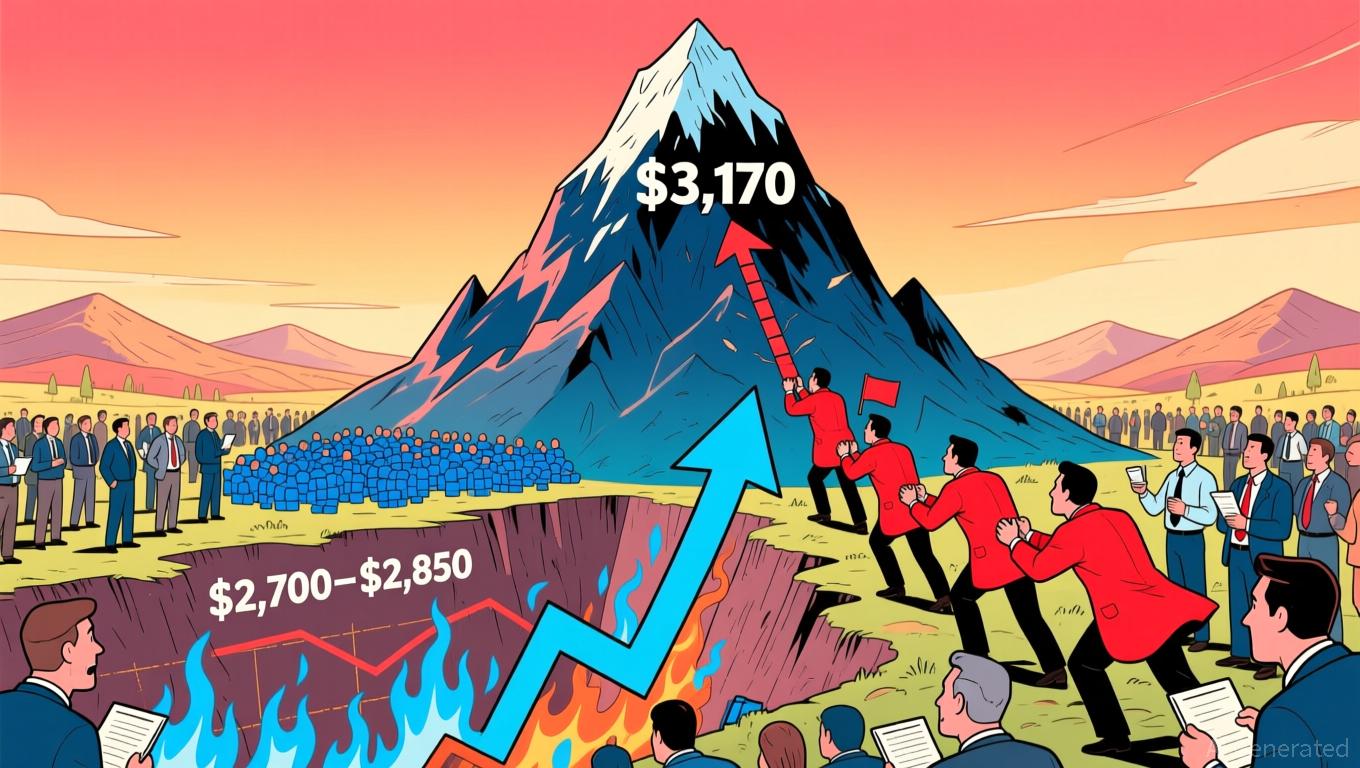Aster DEX's Tactical Enhancement and What It Means for DeFi Liquidity Providers
- Aster DEX's 2025 upgrade introduces ASTER token collateral for leveraged trading, enhancing capital efficiency and reducing reliance on stablecoins. - The upgrade offers 5% fee discounts for ASTER collateral users, creating a flywheel effect that boosts token scarcity and protocol revenue. - By integrating risk management tools and multi-chain support, Aster differentiates itself from GMX and Uniswap V3 through active trading incentives and reduced impermanent loss risks. - CZ's $2M ASTER purchase trigge
Capital Efficiency: Using ASTER as Collateral
The standout feature of Aster’s latest upgrade is the ability to use ASTER tokens as collateral for leveraged trades. Traders can now deposit ASTER and open positions with an 80% margin requirement, significantly increasing their leverage without depending on stablecoins or alternative assets
The update also brings in risk management features, including automated liquidation points, which
Token Utility: Trading Fee Reductions and Supply Locking
With the upgrade, Aster’s native token, ASTER, now provides a 5% reduction on all trading fees when used as collateral
The timing of the upgrade was deliberate. On November 2, 2025, Binance founder CZ acquired $2 million worth of ASTER, sparking an 800% jump in daily trading volume and a 30% price spike
Comparative Analysis: Aster vs. GMX, Uniswap V3, and dYdX
Aster’s blend of capital efficiency and token utility positions it as a hybrid between Uniswap V3’s focused liquidity and GMX’s adaptive fee models. While Uniswap V3 allows LPs to earn within specific price intervals—at the risk of impermanent loss—Aster’s use of ASTER as collateral
GMX’s GLP pools, which mix stablecoins and cryptocurrencies to manage counterparty risk, offer a different take on capital efficiency. In contrast, Aster’s 5% fee reduction and leverage incentives forge a stronger connection between token use and protocol income. This echoes the ve(3,3) concept, where holders earn a share of fees and incentives, but with added flexibility for active traders
When compared to dYdX’s Ethereum-based perpetuals, Aster’s support for multiple chains (BNB Chain,
Implications for Liquidity Providers
For liquidity providers, Aster’s upgrade introduces a new model: active trading participation combined with yield generation. The 5% trading fee discount and leverage incentives create a compounding benefit, enabling frequent traders to accumulate ASTER through lower costs and eligibility for airdrops
Additionally, Aster’s expansion across multiple chains and its hybrid AMM-CEX structure (Simple Mode for casual users, Pro Mode for experienced traders)
Conclusion: Setting a New Standard for DeFi Liquidity
The 2025 upgrade of Aster DEX marks a significant shift in how token utility and capital efficiency are approached in DeFi. By making ASTER both a collateral asset and a means for fee savings, the platform establishes a self-sustaining ecosystem that rewards both traders and liquidity providers. While Uniswap V3 and GMX have pioneered liquidity innovations, Aster’s integration of leverage, risk controls, and supply-side incentives makes it a strong competitor. For LPs, the upgrade offers an attractive proposition: improved capital efficiency, minimized impermanent loss, and a token that gains value as the protocol grows. As the DeFi space continues to develop, Aster’s hybrid approach could serve as a model for future decentralized exchanges.
Disclaimer: The content of this article solely reflects the author's opinion and does not represent the platform in any capacity. This article is not intended to serve as a reference for making investment decisions.
You may also like
ZK Technology's Price Rally: An In-Depth Analysis of On-Chain Usage and Protocol Enhancements
- ZKsync's Q3 2025 protocol upgrades (OS v0.0.5) achieved 15,000 TPS and 1-second block times, enabling high-frequency trading and institutional compliance via Merkle-proof verification. - November 2025 saw ZK rollups process 15,000 TPS, $3.3B TVL in ZKsync, and $2.98B derivatives volume, driven by enterprise adoption from Goldman Sachs and major banks . - Developer activity surged 230% with solx Compiler beta and LLVM-based tooling, while 35+ institutions tested ZKsync's Prividium for confidential cross-b
Bitcoin News Today: "Institutions See Bitcoin as the New Gold Amid Market Downturn"
- Institutional investors like Abu Dhabi’s ADIC and KindlyMD are buying Bitcoin amid its 29% price drop, viewing it as a long-term store of value akin to gold . - ADIC tripled its stake in BlackRock’s IBIT to $518M, while KindlyMD raised $540M to hold 5,398 Bitcoin at $118K average cost, signaling strategic crypto bets. - Despite $3.1B ETF outflows and regulatory risks, Harvard and El Salvador added to Bitcoin holdings, with analysts forecasting potential 2026 recovery if macroeconomic stability returns.

Bitcoin News Update: Index Firms' Reclassification May Trigger $9 Billion Outflow from MicroStrategy
- MicroStrategy risks $9B passive fund outflows if index providers reclassify it as a digital asset vehicle, excluding it from major benchmarks like MSCI USA and Nasdaq 100. - The company holds 80%+ of its value in Bitcoin ($54.4B), creating leverage risks as crypto prices fall and its stock trades below net asset value. - CEO Saylor claims "indestructibility" despite 67% stock price drop and $8.1B debt, while analysts debate whether MicroStrategy should be categorized as an operating firm or crypto fund.

Ethereum News Today: ETH Holds $2,700—Will Buyers Prevent a Drop to $2,500?
- Ethereum tests $2,700–$2,850 support as bearish momentum intensifies, with breakdown risks exposing $2,450–$2,550 levels. - Long-term holders sold 58,352 ETH ($175M) in one day, while whales accumulate, signaling potential redistribution. - Fed minutes triggered a seven-month low near $2,870, aligning with historical support clusters and 2021–2022 price range midpoints. - A $2,700–$2,850 defense could target $3,050–$3,150, but sustained recovery requires breaking above $4,200 trendline.
